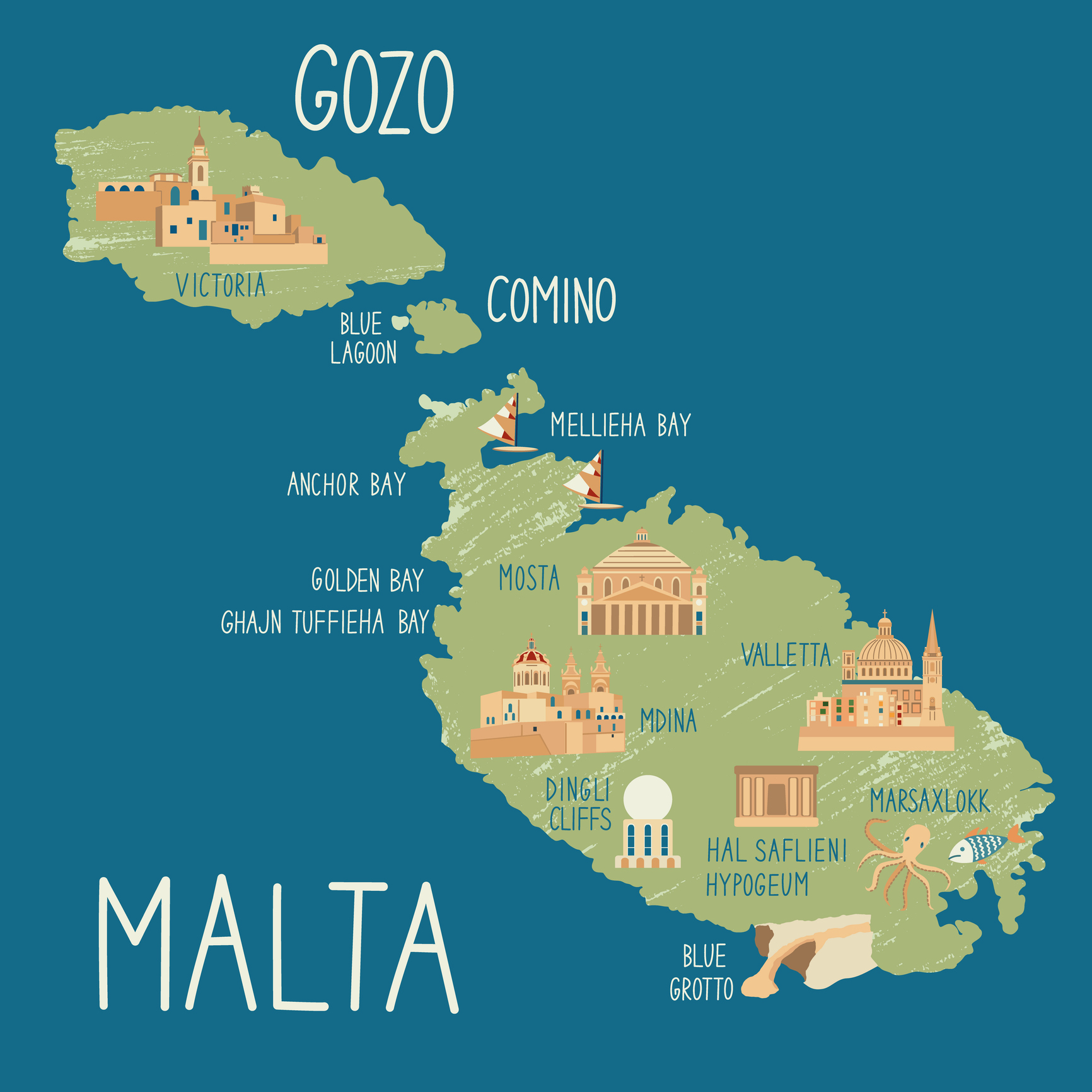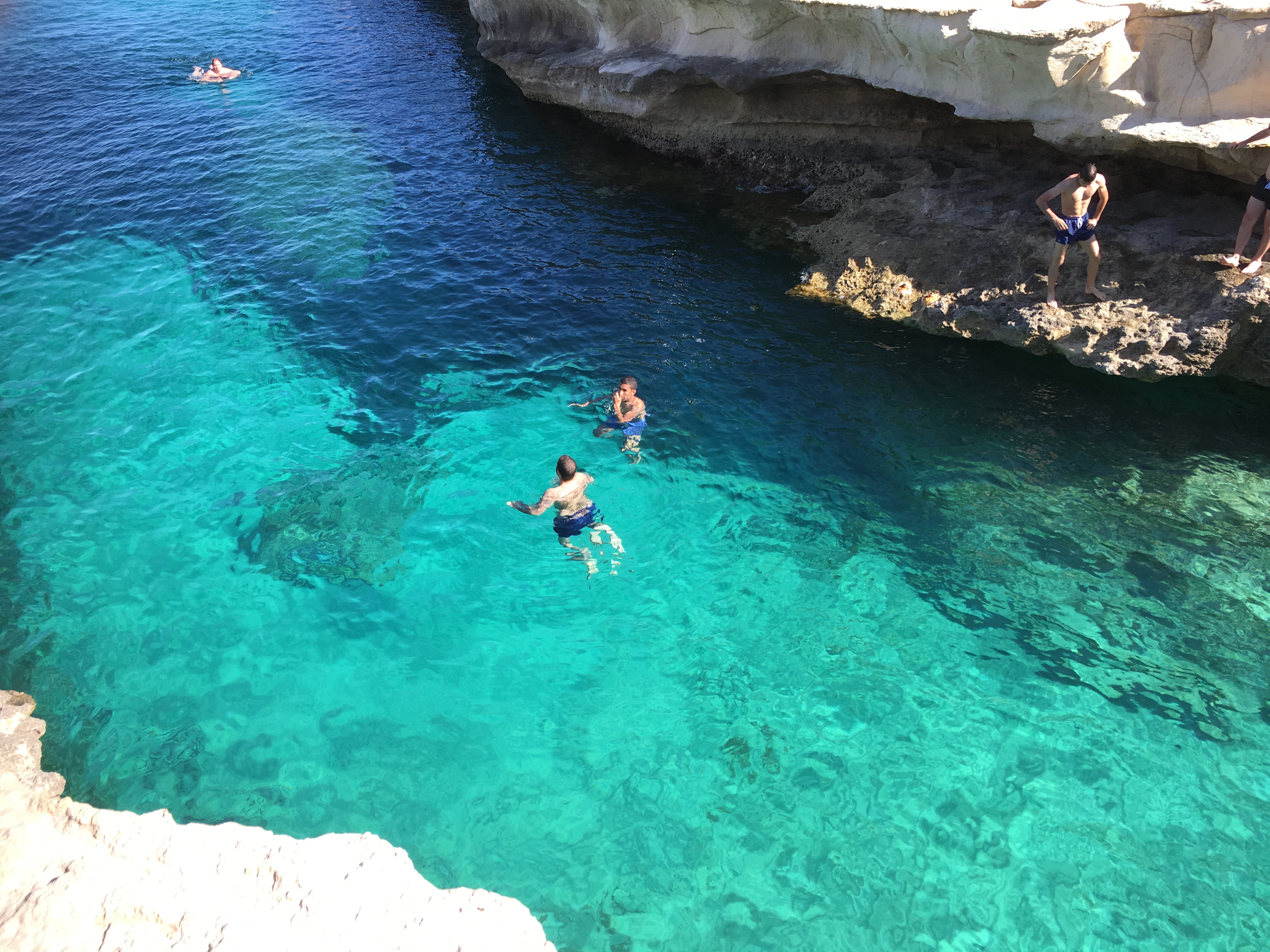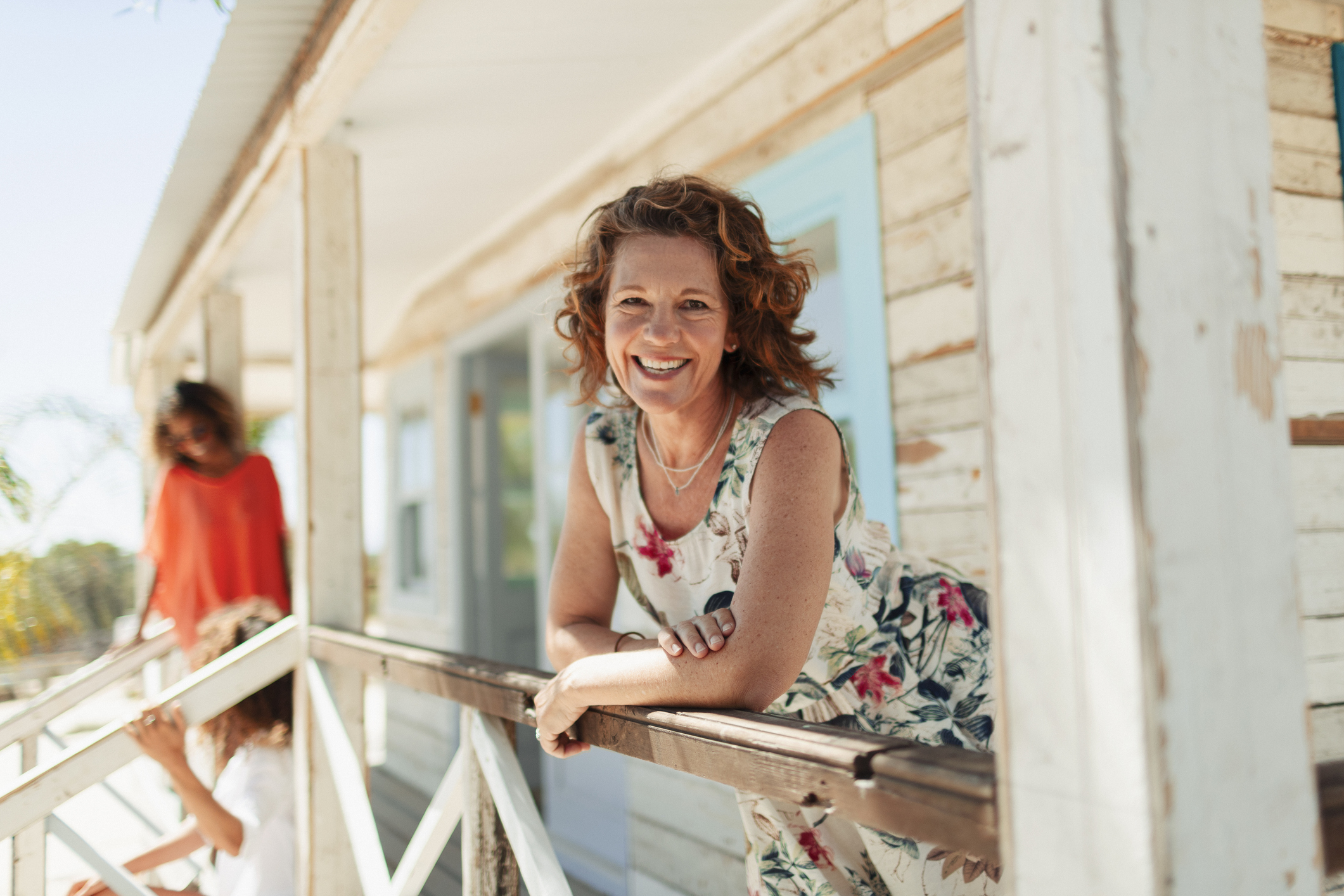Retire in Malta for Quiet Coastal Perfection
Seemingly remote yet easily accessible to other points in Europe, sunny Malta offers paths to citizenship and residency for retirees.


Editor’s note: "Retire in Malta" is part of an ongoing series on retiring abroad. To see all the articles in the series, jump to the end of this article.
For those seeking a happy retirement abroad, consider the sun-splashed 122 square miles that comprise the nation of Malta. It is located in the Mediterranean, due south of the much larger island of Sicily. Malta shares the same sultry climate, and is an hour and 45 minutes away, via ferry, from Sicily’s southern port of Pozzallo.
Malta is an archipelago, with only the three largest islands inhabited: Malta, which is home to Valletta, the country’s capital; Gozo, which is more rural, with natural beauty, fine beaches, and subtropical fjords that recall the calanques of the South of France; and Camino, which has only two permanent inhabitants and attracts day trippers to its stunning Blue Lagoon, which is great for snorkeling and swimming.

Sign up for Kiplinger’s Free E-Newsletters
Profit and prosper with the best of expert advice on investing, taxes, retirement, personal finance and more - straight to your e-mail.
Profit and prosper with the best of expert advice - straight to your e-mail.
Since Malta has only 542,000 residents and only two islands to choose from, potential retirees can make short work of finding a place to settle down. Of course, the vast majority will opt for the main island, either choosing the culturally rich historic city of Valletta; or Sliema, Valletta’s modern resort sibling across the bay. Ferries from one to the other leave every 30 minutes, and the crossing takes around 10 minutes.
Retirees from the U.S. can take comfort in the fact that expats make up one-fifth of Malta’s population, and that the country boasts an advanced, service-oriented economy that is not only stable but growing. Matthew Cassar, a lawyer based in Sliema, has focused solely on Malta’s residency and citizenship programs for the last eight years. He touts Malta’s low crime rate: “We are a small country, and everywhere is covered by CCTVs.”
Retire in Malta for a coastal lifestyle

You don’t have to love the water to be happy in Malta, but it certainly helps. Its sandy beaches and rocky coves give way to some of the clearest, calmest, and loveliest turquoise waters to be found anywhere in the world. And with the country’s narrow climate range — in the 50s and 60s in the somewhat rainy winters, to the 80s during the dry summers, you can swim for around eight months out of the year, from April to November.
Top swim spots include the moonscape of coves that compose St. Peter’s Pool on the main island; Gozo’s Mġarr ix-Xini, the fjord that served as a gorgeous shoot location for the film By the Sea, starring Brad Pitt and Angelina Jolie; and the reddish sands of Ramla Beach, also in Gozo.
Unfortunately, some beaches on the island of Comino have been overrun by tourists. However, recent limits on the number of visitors and a focus on conservation are improving the beachgoers' experience.
Sliema makes the most of Malta’s coastal geography, with its Riviera vibe, seafront hotels and cafes, and vibrant waterfront promenade. This is the densest and priciest part of Malta. Sotheby’s listings include, at the low-end, one- and two-bedroom condos priced from 600,000 to 700,000 euros, to lavish residences and townhouses for one million euros, or more.
A twenty-five-minute drive to the south leads you to the scenic fishing village of Marsaxlokk, with its characteristically colorful boats called luzzu. With only 3,500 people, Marsaxlokk is the type of place where you’re more likely to find an apartment (around $1,000 euros a month, depending on the number of bedrooms) than a sleek condo to buy. But the scenery and harborside cafes are enchanting.
That leaves Valletta, the main event, where a one-bedroom maisonette (that means a private street entrance) can set you back 400,000 or 500,000 euros; two-bedrooms cost under a million; and palazzos and townhouses fall into the low-to-mid-million-euro range. Valletta, which is filled with bars and restaurants, offers a traditional “European” experience — with its 16th-century architecture, pedestrian lanes, public squares, and historical churches — but features a flavor all its own, with its distinctive enclosed balconies that extend over narrow sidewalks, and its mix of Latinate and Arabic cultural cues. (Maltese is a Semitic language all its own, but English is widely spoken in the country.) If mobility is an issue, note that Valletta contains numerous wide but steep outdoor staircases.
Visa and money matters

To avoid confusion, Cassar doesn’t use the term “golden visa.” He says that high-net-worth individuals and families typically opt for the citizenship program, which approaches one million euros in total, depending on the size of the family. In addition to initial fees, the final government “contribution” ranges from 600,000 euros (for those who have resided in Malta for three years) to 750,000 euros (for those with one year of residence).
Cassar says the vetting process for citizenship is stringent: “The government agency wants to know how much the person is worth, and how that money was made. There is a lot of emphasis on the source of wealth.” He says that refusals run to around 31%. (He remembers one American applicant who was worth around $30 million but provided only 20 pages of financial documentation. He was rejected.)
By contrast, the residency program (also known as MPRP), which takes around 12 months to process, will cost a family of four only around 150,000 euros. That figure is arrived at through a 50,000 euro administrative fee (plus 10,000 euros per dependent), renting a property for a minimum of 14,000 euros per year, and making a 60,000 euro government contribution, if renting. When purchasing a property, the home must have a value of 350,000 euros, though the contribution drops to 30,000 euros. The prospective resident must also meet income and capital assets requirements. Health insurance is required for new MPRP residents, but it is very reasonable, starting at around 400 euros a year.
The relative value between the two is considerable: “Whereas in the citizenship program, you get a passport and you become an EU citizen,” he says, “in the case of residency, you get a residency card, and you have the right to reside in Malta.” However, visa-free travel for a resident within the 29 Schengen countries is limited to 90 out of 180 days. Citizenship carries no such restriction.
Regarding taxation, expatriates working in Malta pay a personal income tax rate of 15% up to 5 million euros. However, any income sourced outside of Malta, including capital gains, dividends, and interest, is entirely tax-free.
Living in Malta: the takeaway
Malta is a deeply unique, beautiful country of undeniable juxtapositions. Looking at Malta on a map, the country seems remote, yet you can fly directly from Valletta to Rome or Athens in just 95 minutes. It is homespun, friendly, and trustworthy: For example, if you’re visiting Gozo without a car, you can probably meet a driver at dinner who will take you to the beach the next day, and pick you up after a few hours.
Malta’s coveted status as a sunny tourist destination — as well as its intriguing blend of cultures — makes for a stimulating and lively atmosphere. Though the cost of living is relatively high (unless you’re relocating from a major American city), most things are easy in Malta, with residency and citizenship options available as other desirable Mediterranean countries are eliminating theirs.
If you want to retire near a big city, it’s probably best to look for a location on the European mainland instead. Though Valletta and Sliema are populous by Maltese standards, they can’t compare to metros like Athens, Rome, or Nice, much less London or Paris.
The country’s social environment is a curiosity. Malta demonstrates both Catholic orthodoxy and “live-and-let-live” strains. It wasn’t until 2021 that Malta relaxed its arduous restrictions on divorce (Malta was one of the last countries in the world to legalize divorce). In addition, until 2023, abortion was completely banned; even today, the only legal exception to the prohibition is to save the life of the mother.
Curiously, at the same time, Malta has long been a world leader in LGBTQ rights, with extremely progressive protections in place for this community. Cassar notes that interest in residency and citizenship from transgender individuals and their families has increased due to uncertainty and hostility emanating from the Trump Administration.
More on Where to Retire Abroad
- Retire in Mexico: Get a Lower Cost of Living Near the US
- Best Places for LGBTQ People to Retire Abroad
- Living in Portugal as a US Retiree
- Living in Panama Provides Stability and Charm
- Retire in Thailand, Where 'The White Lotus' Was Filmed
- Where to Retire: Living in Brazil Is More Than Carnival, Coffee and Copacabana
- Where to Retire: Living in the Dominican Republic
- Where to Retire 2025: Puerto Rico
- Return to Your Home Country to Retire: Repatriation Retirement
- How to Manage Retirement Savings When Living Abroad
Profit and prosper with the best of Kiplinger's advice on investing, taxes, retirement, personal finance and much more. Delivered daily. Enter your email in the box and click Sign Me Up.

Drew Limsky joined Kiplinger Digital as a freelance retirement writer because he believes that every day offers opportunities to make better financial decisions, and that it’s never too late to learn how to enhance your financial position and lifestyle. Drew is the former editor of Lexus magazine, Cadillac magazine, South Florida Business & Wealth, Business Jet Traveler, Interiors South Florida, and Mariner (for Holland America). Drew’s writing credits include The Wall Street Journal, New York Times, LA Times, Washington Post, Boston Globe, Yahoo, Worth, AD, Robb Report, Metropolis, Men’s Journal, and Business Insider. An Emory grad, Drew earned his JD and PhD at NYU, and lives in Miami Beach, Brooklyn, and Cape Cod.
-
 I'm 58 and unexpectedly inherited $650K. Does this change my retirement timeline?
I'm 58 and unexpectedly inherited $650K. Does this change my retirement timeline?We asked an expert financial adviser to weigh in.
-
 Why Smart Retirees Are Ditching Traditional Financial Plans
Why Smart Retirees Are Ditching Traditional Financial PlansFinancial plans based purely on growth, like the 60/40 portfolio, are built for a different era. Today’s retirees need plans based on real-life risks and goals and that feature these four elements.
-
 Why Smart Retirees Are Ditching Traditional Financial Plans
Why Smart Retirees Are Ditching Traditional Financial PlansFinancial plans based purely on growth, like the 60/40 portfolio, are built for a different era. Today’s retirees need plans based on real-life risks and goals and that feature these four elements.
-
 Will an AI Robot Take Care of You in Old Age?
Will an AI Robot Take Care of You in Old Age?AI Robots may be just the help older adults and their caretakers need for a host of tasks. Just don't expect it to be a cute little humanoid — yet.
-
 Technology Unleashes the Power of Year-Round Tax-Loss Harvesting
Technology Unleashes the Power of Year-Round Tax-Loss HarvestingTech advancements have made it possible to continuously monitor and rebalance portfolios, allowing for harvesting losses throughout the year rather than just once a year.
-
 The Fiduciary Firewall: An Expert's Five-Step Guide to Honest Financial Planning
The Fiduciary Firewall: An Expert's Five-Step Guide to Honest Financial PlanningArmed with education and awareness, you can avoid unethical people in the financial industry by seeking fee-only fiduciaries and sharing your knowledge with others.
-
 What is the IRMAA (Income-Related Monthly Adjustment Amount)?
What is the IRMAA (Income-Related Monthly Adjustment Amount)?IRMAA is a surcharge added to your Medicare Part B and Medicare Part D prescription drug coverage premiums if your income is above a certain level. Here's what you need to know.
-
 Want to Avoid the IRMAA? Consider a Roth Conversion
Want to Avoid the IRMAA? Consider a Roth ConversionIf you make above a certain income, expect to pay more for Medicare, unless you take steps to lower your income. Here's how.
-
 Real Estate Bridge Funds: An Expert Guide to Investing in a Volatile Market
Real Estate Bridge Funds: An Expert Guide to Investing in a Volatile MarketInvestors looking for passive income are buying into these funds, which offer capital to borrowers for short-term financing.
-
 I'm 52 With $2.1 Million in Retirement Savings: Can I Afford a Second Home?
I'm 52 With $2.1 Million in Retirement Savings: Can I Afford a Second Home?Buy a second home now, or wait until retirement? It depends.